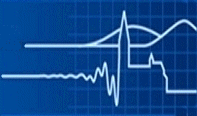Investigation of Melting and Re-Crystallisation Behavior of Polyethylene Nanocrystals
Nandita Basu. Inaugural-Dissertation zur Erlangung des Doktorgrades der Fakultät für Mathematik und Physik der Albert-Ludwigs-Universität Freiburg, 2012
Abstract
Polymer crystals are metastable and exhibit morphological changes when being annealed. To observe morphological changes on molecular scales we started from small nanometer-sized crystals of highly folded long-chain polymers. Micronsized stripes consisting of monolayers or stacks of several layers of flat-on oriented polyethylene nanocrystals were generated via evaporative dewetting from an aqueous dispersion. We followed the morphological changes in time and at progressively higher annealing temperatures by determining the topography and viscoelastic properties of such assemblies of nanocrystals using atomic force microscopy. Due to smallness and high surface-to-volume ratio of the nanocrystals, already at 75 °C, i.e. about 60 degrees below the nominal melting point, the lateral size of the crystal coarsened. Intriguingly, this occurred without a noticeable reduction in the number of folds per polymer chain. Starting at around 110 °C, chain folds were progressively removed leading to crystal thickening. At higher temperatures, but still below the melting point, prolonged annealing allowed for surface diffusion of molten polymers on the initially bare substrate, leading eventually to the disappearance of crystals. We compared these results to the behavior of the same nanocrystals annealed in an aqueous dispersion and to bulk samples.
We also explained how scanning the AFM probe over a viscous melt led to a deformation of the molten surface as a shear force was acting on the melt surface induced by the moving AFM cantilever tip. The molecular chains within the melt were stretched by the AFM cantilever-tip during scanning. Typically, a large shear rate as well as significant mechanical work was applied on the undercooled melt and this enhanced the possibility of the stretched molecular chains to be aligned along the direction of scan. The aggregation of the stretched and aligned chains along the scan direction resulted in small crystalline domains. The mechanism of tip-induced nucleation has been described in detail. Factors such as number of scans or more specifically, the shearing time and tapping force affecting the nucleation rate or the nucleation probability have been discussed in detail. How nucleation induction time and contact time between the molten sample surface and the AFM probe influenced the nucleation rate were included in our discussion. It has been shown that the temperature of the undercooled melt is an important parameter in describing the tip-induced nucleation phenomenon. Even in regions consisting of few droplets of different sizes at a temperature close to the melting temperature, it was shown that well aligned edge-on crystalline domains along the scan direction can be found. A mechanism for the formation of stacks of edge-on crystalline lamellae has been proposed.
